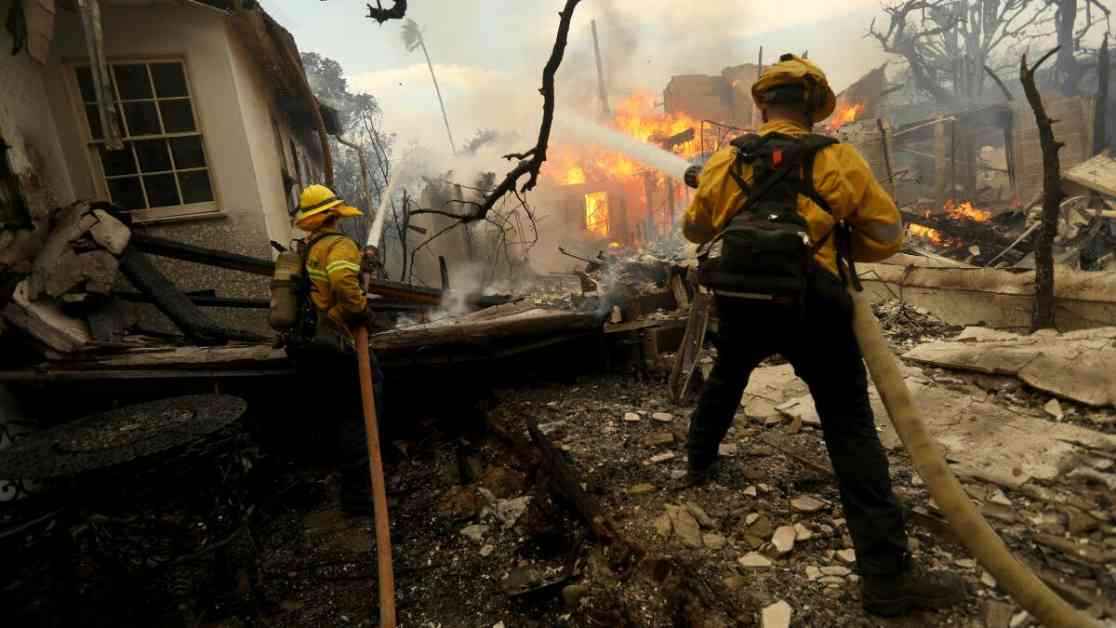California FAIR Plan Overwhelmed by 4,400 Wildfire Claims
The California FAIR Plan, the state’s insurer of last resort, is facing a significant challenge as more than 4,400 homeowners in Los Angeles County have filed insurance claims in the wake of devastating wildfires. This influx of claims has put a strain on FAIR’s finances, potentially leading to increased insurance costs for homeowners statewide, regardless of their proximity to fire-prone areas.
The FAIR Plan offers insurance coverage to homeowners who are unable to obtain policies from traditional insurers due to high fire risk. It also provides more affordable but limited coverage options for those who cannot afford standard rates. However, the plan is operating with limited assets, with only a few hundred million dollars in reserves. With claims exceeding $900 million, FAIR may need to rely on reinsurance to cover its costs.
Challenges and Financial Strain
Reinsurance, which serves as insurance for insurers, becomes necessary when an insurance company faces an overwhelming number of claims. FAIR’s reinsurance coverage maxes out at $2.6 billion, and the current claims situation has pushed the plan to its limits. As of January 28, more than 3,200 claims have been filed for damage from the Palisades fire, along with over 1,200 claims for the Eaton fire. The total cost of the fires in the L.A. area remains unknown, but estimates place property losses between $35 billion and $45 billion.
One of the hardest-hit areas by these wildfires is Pacific Palisades, which has a high concentration of FAIR Plan policyholders. The insurer’s exposure in this neighborhood alone is estimated to be around $5.89 billion. If reinsurance proves inadequate to cover FAIR’s liabilities, state regulations mandate that other insurance companies must make up the difference. This could result in increased insurance rates for homeowners across California.
Policy Changes and Future Implications
In response to the escalating financial challenges facing FAIR, a bill is being considered in the state Legislature that aims to sell bonds to help finance the plan. This would shift some of the financial burden from homeowners to taxpayers statewide. Meanwhile, major insurers like State Farm and Allstate have ceased offering new homeowner policies in California, while others have raised prices or limited coverage.
The evolving landscape of insurance in California has seen the FAIR Plan’s policy count more than double in a short period, increasing from over 200,000 policies in September 2020 to exceeding 450,000 by September of the following year. This surge has significantly raised the plan’s statewide loss exposure to $458 billion. Recent policy changes now allow insurers to use catastrophe models to assess risk and charge homeowners for reinsurance costs, a practice common in other states but relatively new to California.
The shift towards using advanced modeling tools and passing on reinsurance costs to policyholders marks a significant change in the insurance industry in California. While these changes may lead to higher premiums for homeowners, they are seen as necessary steps to address the growing financial strain on insurers like the FAIR Plan.
As the impact of wildfires and other natural disasters continues to affect homeowners across the state, the insurance landscape in California is rapidly evolving to adapt to these challenges. The FAIR Plan’s ability to navigate these changes and provide essential coverage to those in high-risk areas will be crucial in ensuring the resilience of communities in the face of future disasters.


